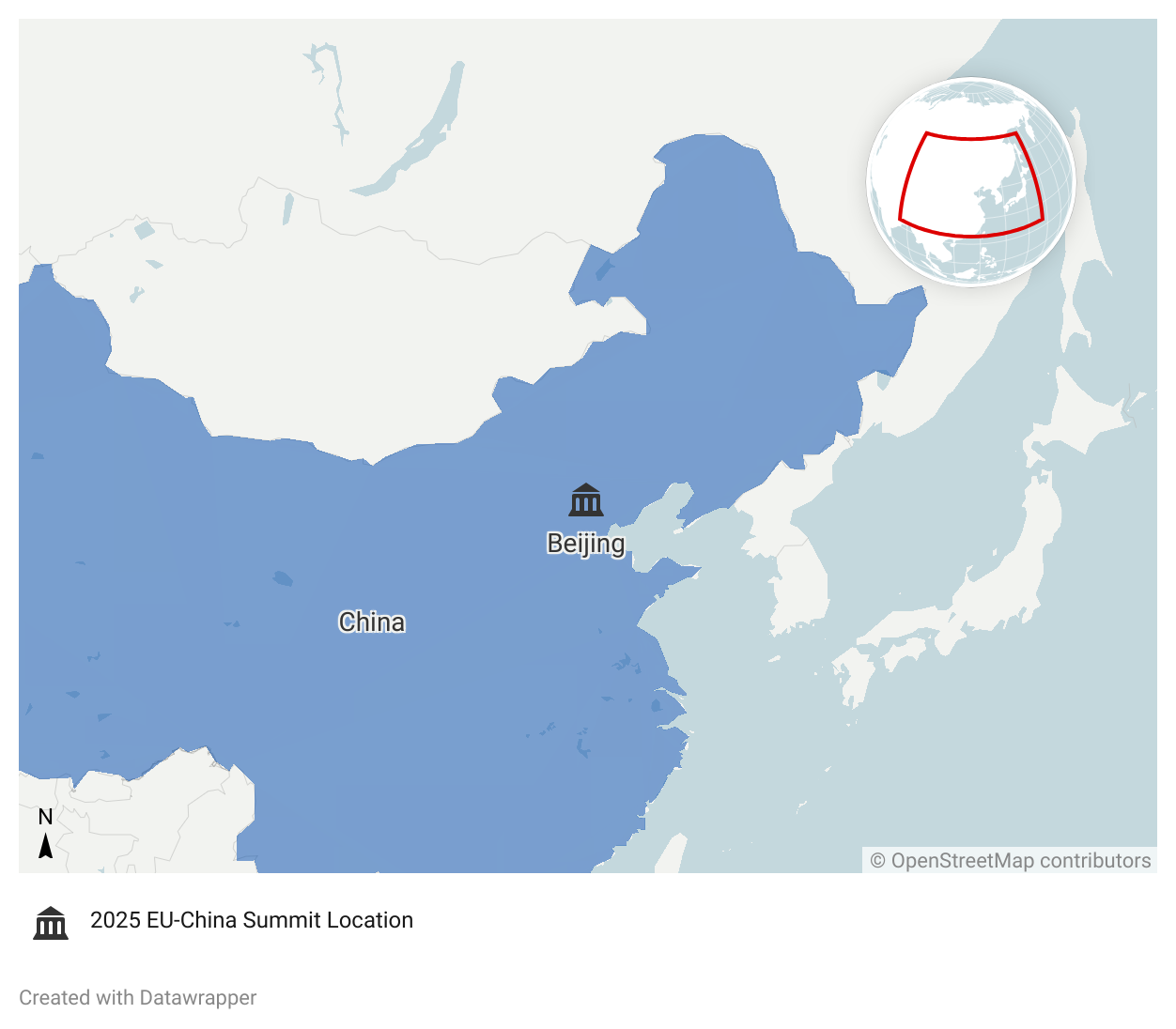EU-China Summit: How will Europe Handle its Rare-Earth Elements Supply?
By Anna Toso | 20 August 2025
Summary
Chinese and European Union (EU) representatives met in Beijing on 24 July 2025 to negotiate the future of the rare earth elements (REEs) supply from China to Europe, among other topics.
The REEs export restrictions implemented by China in April 2025 exposed the risks of the European overreliance on undiversified imports of these strategically crucial materials.
The EU will highly likely work on securing trade agreements for REEs supply with different third countries and rethink the strategic importance of REEs within its climate and defence goals.
On 24 July 2024, the President of the European Commission Ursula Von der Leyen and the President of the European Council Antonio Costa met the Chinese President Xi Jinping and the Chinese Prime Minister Li Qiang during the EU-China Summit 2025 in Beijing. They agreed to upgrade the bilateral dialogue on trade affairs, aiming to increase transparency and establish guarantees for European companies, especially regarding the supply of permanent magnets and rare earth elements (REEs).
Overall, the EU imports significantly more than it exports to China: in 2024, the EU’s negative trade balance was over USD 353.6b (GBP 261.9b). Additionally, the EU opened 25 trade defence investigations into Chinese products in the past year due to Beijing’s alleged misuse of retaliatory “anti-dumping measures” against European goods. Most recently, on 4 April 2025, China restricted the export of 7 REEs – terbium, dysprosium, samarium, gadolinium, lutetium, scandium, and yttrium. The move was a retaliation following the US’s increased tariffs against Chinese products. However, the restriction generated significant disruptions for European and global supply chains.
Similarly, in 2011, China limited the export of REEs, generating all-time-high prices. Likewise, the current market volatility exacerbates the insecurity of REE prices, which have been on the rise since 2019. The main drivers of this increase are growing global demand and geopolitical insecurities across the value chain, such as the coup in Myanmar – a major supplier of raw materials to China – and unpredictable tariffs and embargoes of the US-China trade war.
Most relevantly, the exported quantities of REEs from China dropped by 50% month-to-month in April and May 2025 as a consequence of the recent trade restrictions. The ensuing shortage exposed the risks of the EU’s dependence on Chinese REEs. European industries, such as automotive (in particular, electric vehicles manufacturing), defence, high-tech, and clean energy infrastructure building (especially wind turbines), crucially rely on these imported materials, which are thus instrumental to achieving the European strategic climate and military goals of the Green Deal, RePowerEU, and ReArm Europe. The EU is entirely reliant on third-country suppliers for REEs and critically exposed to Chinese providers, as China holds a global quasi-monopoly in the industry. Although REE reserves are also found in Australia, Malaysia, Canada, Africa, Japan, the US, and Europe, China hosts around 50% of the total REE reserves worldwide and 69% of REE mine production. Since 2020, its manufacturing capacity has doubled, driven by surging global demand. Specifically, the European demand for REEs is expected to increase sixfold by 2030 and sevenfold by 2050. Despite the geopolitical and economic risks of the current European overreliance on China, there are no readily available alternatives for diversification. Namely, China fully controls the production of some REEs worldwide – for instance, dysprosium and terbium – and has a vertically integrated industry that monopolises 90% of global REE processing and protects its manufacturing technologies and know-how.
From the Chinese perspective, the EU represents a minor share of Chinese-produced REEs, most of which are used for domestic consumption. In 2024, Beijing realised a total of 270,000 metric tons of REEs; it exported 17,700 metric tons, among which the EU purchased only 6,000 metric tons. To mitigate the dangers of such an asymmetric trade relationship, the EU can proceed with implementing the Critical Raw Materials Act (CRMA). The Commission established the 2030 goals of domestically extracting 10% of its annual consumption and increasing processing and recycling. Working towards these ambitions, several member states have approved innovative projects, for instance, REE extraction from iron ore production by-products in Sweden, and REE recycling programmes in France and Italy. The CRMA initiatives also include strategic projects abroad, which, however, received widespread criticism. One of them is the Jadar lithium mining project in Serbia. Although this facility could meet 90% of the EU’s lithium needs, its construction has faced severe opposition from local communities alongside concerns about environmental and democratic violations.
The recent EU-China summit could represent a diplomatic step towards negotiating more collaborative and transparent conditions in place of the REEs export restriction, thereby preventing the escalation of retaliatory trade measures that would otherwise undermine the EU’s strategic interests and investments.
European Union
Forecast
Short-term (Now - 3 months)
The EU will likely reassess and update its minimum stock levels of REEs to establish greater guarantees against market volatility and potential future additional trade restrictions.
Medium-term (3-12 months)
In the upcoming year, the EU Member States will highly likely pursue investments to upscale domestic mining sites of REEs, which will nonetheless not be enough to substitute the overreliance on imports from third countries in the medium term.
During the next few months, the Commission will highly likely activate negotiations and new partnerships with different third countries to diversify its suppliers of REEs.
Long-term (>1 year)
There is a realistic possibility that the Commission will revise the long-term objectives of its climate and defence strategies, including a renewed focus on investing in companies that conduct research and development of new REEs-free technologies to overcome its overreliance on these imported materials.



